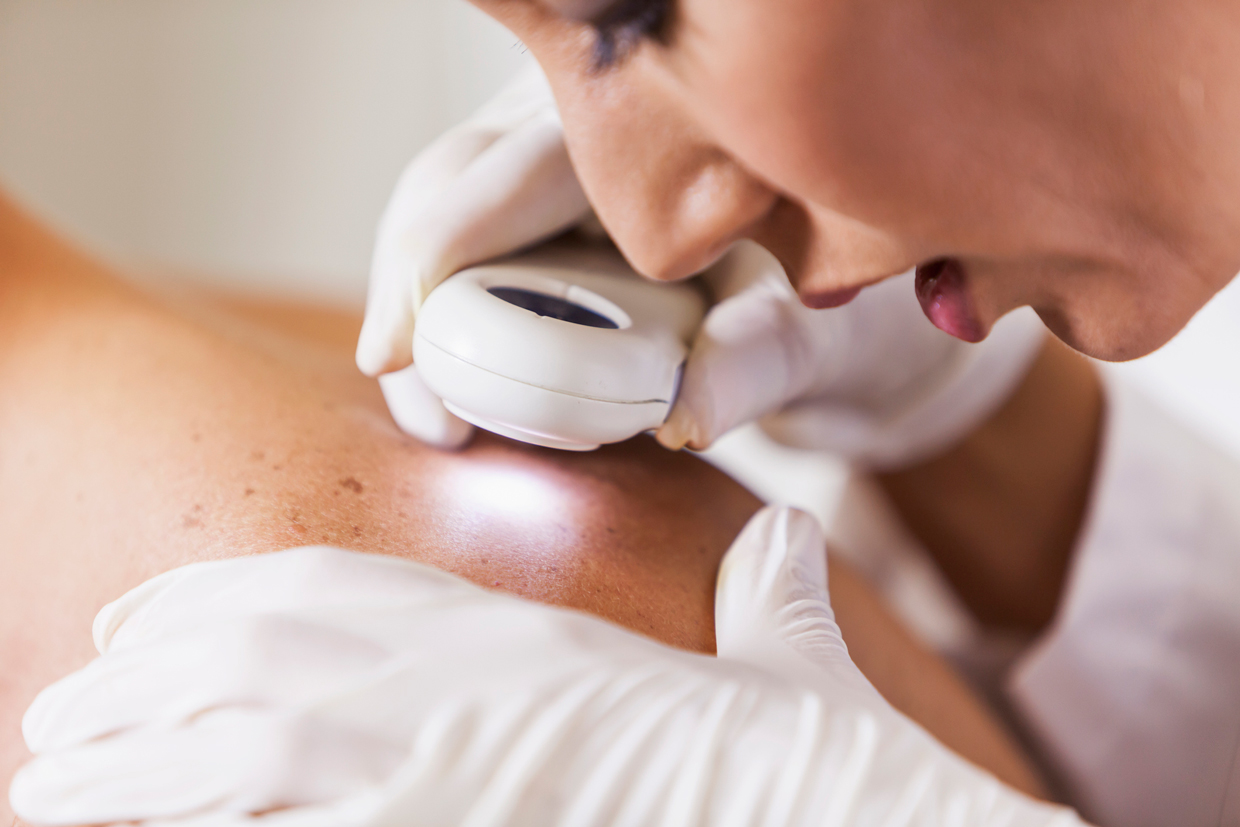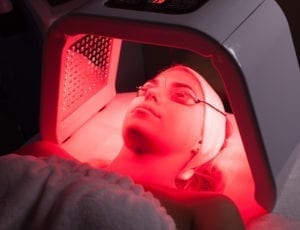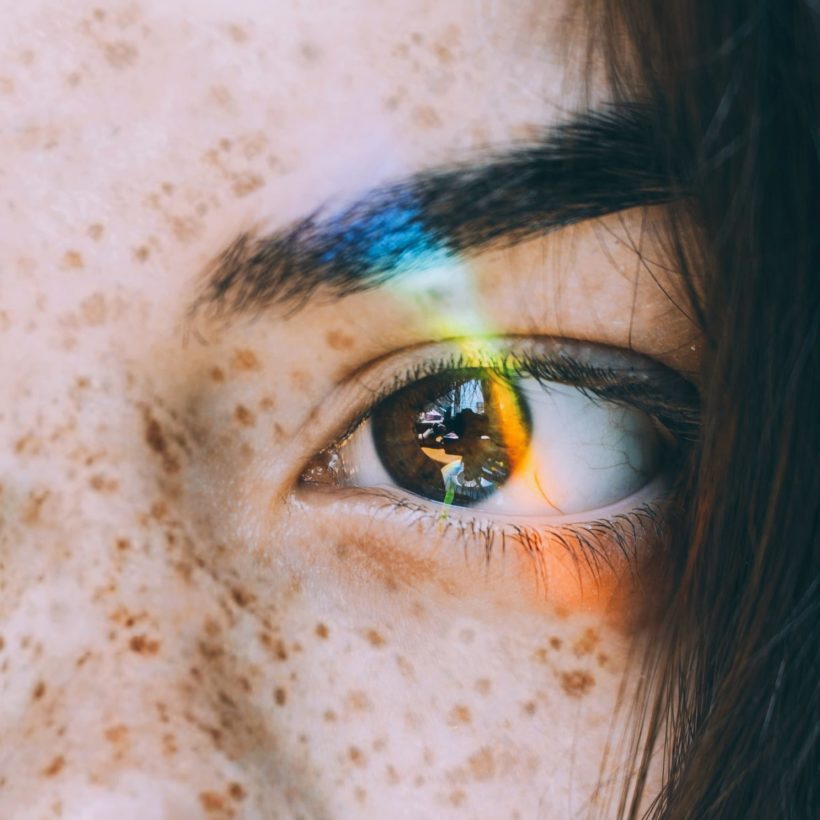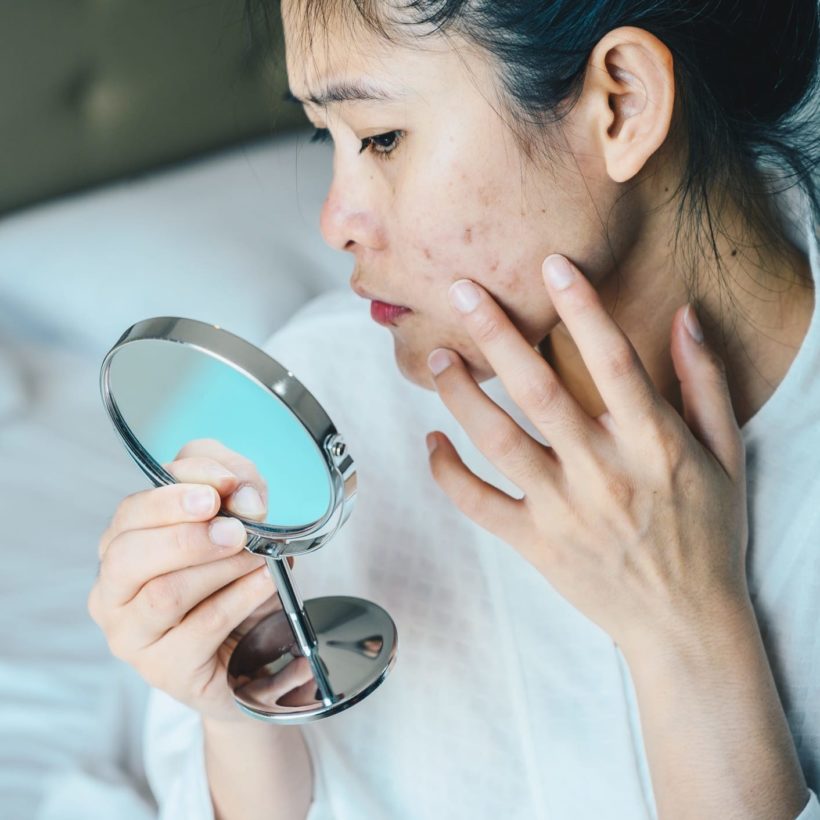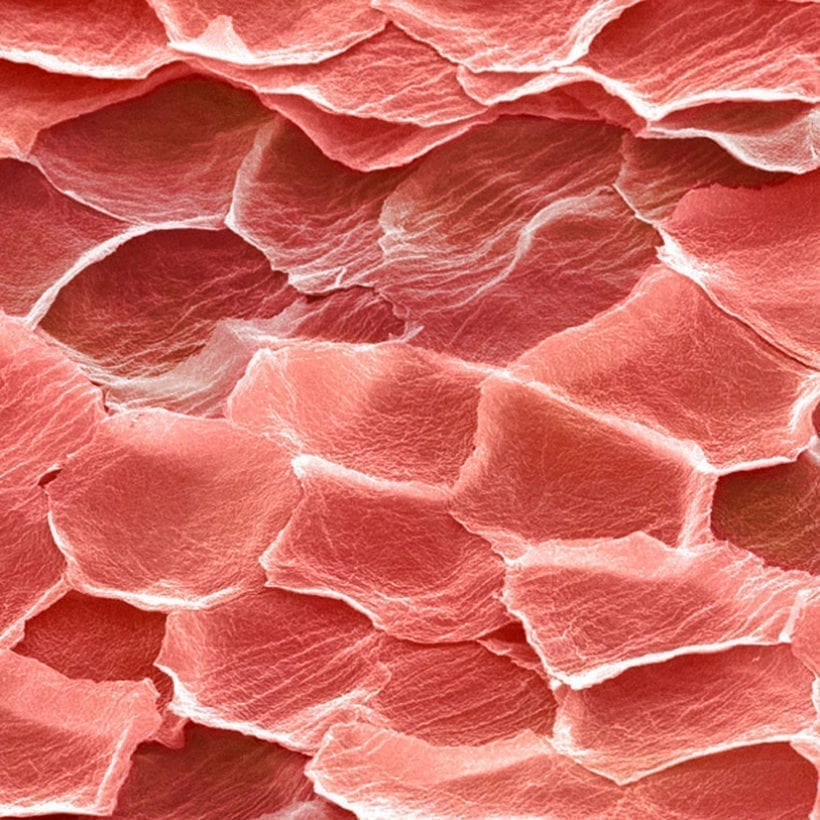The pandemic has given us a lot of opportunities to stare relentlessly at our skin, so if you’ve noticed a new skin tag, you’re not alone. Skin tags (or acrochordons) are “benign, non-cancerous skin growths that most adults will get at least once in their lifetime,” says Dr. Robert Finney, board-certified cosmetic dermatologist at Entière Dermatology. If you’re curious about whether or not a growth is a skin tag, here are the basics before you have a chat with your own derm.

Who skin tags affect
Long story short: Anyone can get skin tags. “Skin tags occur in over half of all adults — no matter the race or gender,” says Finney. Although we usually see skin tags associated with those over 30, younger patients can certainly get them. In addition to age, other factors that increase your risk of developing skin tags include:
- Genetics: “If your parents have a lot of benign growths on their skin, chances are we’ll start to see that in their kids,” says Finney.
- Diabetes or weight gain: “You don’t have to have diabetes to get skin tags, but we do see them more common in those who have weight gain, diabetes, or they’re predisposed to diabetes,” he says.
- Pregnancy: Due to a combination of weight gain from pregnancy and hormonal changes during pregnancy, skin tags are more likely to develop.
How to recognize skin tags
If you ever have a concern about growth, it’s always best to consult your dermatologist. They can look very similar to a mole or wart, but they have distinctions that your healthcare professional will be able to evaluate with a trained eye. The main factor to look for is that a skin tag is skin-colored or slightly hyperpigmented, soft to the touch, and around the size of a millimeter — though they can be bigger. A dermatologist could also use a dermatoscope or take a biopsy to test it. “They can appear anywhere on your body, but they typically like to occur on the neck, the axilla, or in the groin area,” says Finney.

How to differentiate them from other skin conditions
“Skin tags can mimic different types of moles — or intradermal nevi. The nevus, or the mole cells, are a little bit deeper in the skin, which actually creates a slight elevation in a softer, more skin-colored mole. Skin tags tend to be pedunculated, which means they’re attached to a little stalk’s skin before having a slight balloon shape above them. So, that’s pretty classic for a skin tag, but sometimes they don’t always have that very thin stalk attached. Intradermal nevi — moles — typically have a broader base while warts tend to be a bit firmer and a slightly more vascular component to them,” says Finney.
Your skincare routine with skin tags
Your routine doesn’t have to change much if you decide to keep your skin tags. “Any time you have a growth, you just want to be careful with being too rough on your exfoliants,” says Finney. If you’re using a physical exfoliator, in particular, “you have a higher chance of causing irritation to your skin tag since it’s elevated.” Otherwise, you don’t need to avoid certain products or ingredients on skin tags.
Skin tag treatment and removal
You don’t need to seek treatment unless you’re bothered by the appearance. While they’re harmless, they can be annoying and painful when they get snagged on your accessories or if you accidentally scratch one. Though one of the latest TikTok beauty trends has been to pluck your skin tags off at home, Finney disagrees. “Over-the-counter treatments are not recommended. People have done stuff like tie floss around a piece of it — and if you constrict blood supply, it’ll pull off. However, you can get infections from doing it that way,” says Finney. At-home treatments could also lead to scarring, damage to healthy skin, or incomplete removal that causes the skin tag to grow back.
The best way is to get a quick in-office procedure to remove it by:
- Cutting or shaving it off.
- Cauterization if they’re really small and they’re not that elevated from the skin’s surface.
- Using liquid nitrogen to either freeze it with the cold spray or dip forceps into the cold spray and then pinch the little stalk to get it to die off.

Recovery post-removal
Luckily, recovery is about the same as healing from any other minor cut. “Typically, if it’s a larger stalk, and it’s attached a little more to the skin, then it would be helpful to keep it covered with Vaseline in a band-aid daily until it heals up in several days,” says Finney. If your skin tag was very tiny and you can hardly see where you removed it, you can probably even get away with leaving it bare and having it heal on its own.
